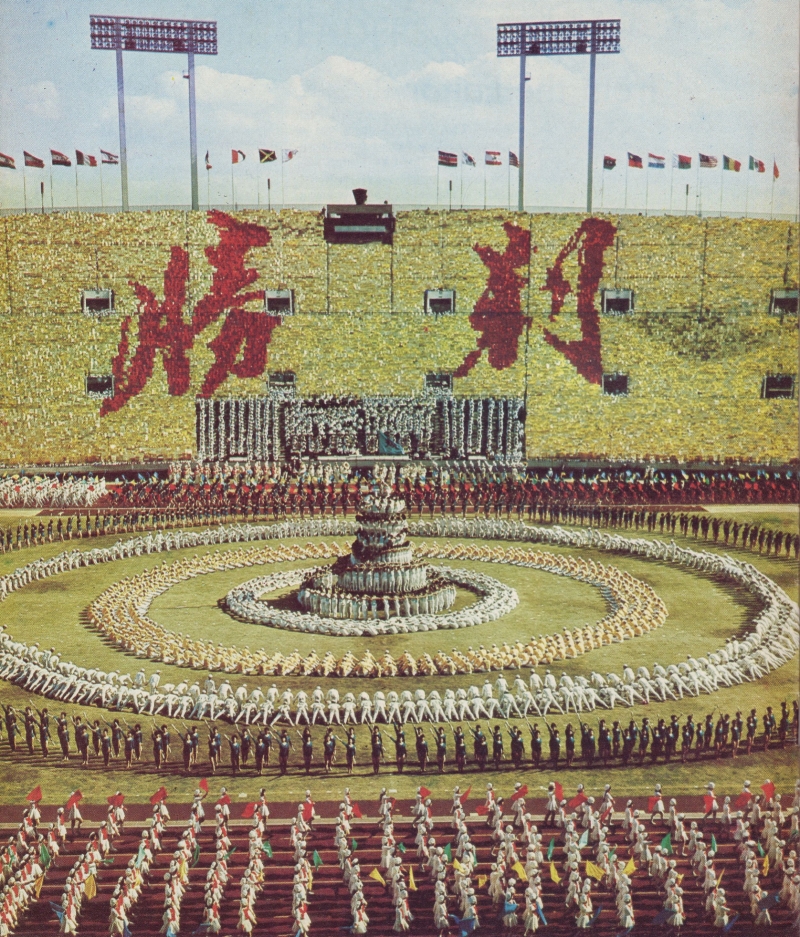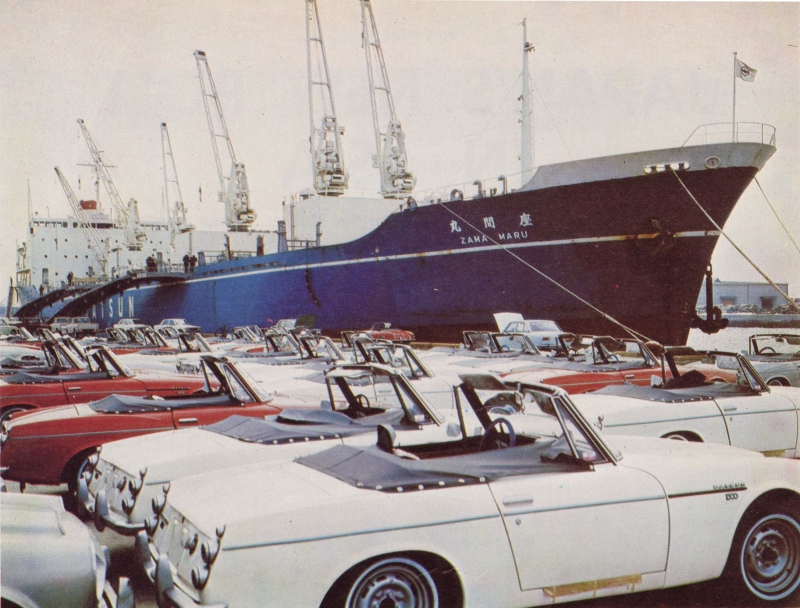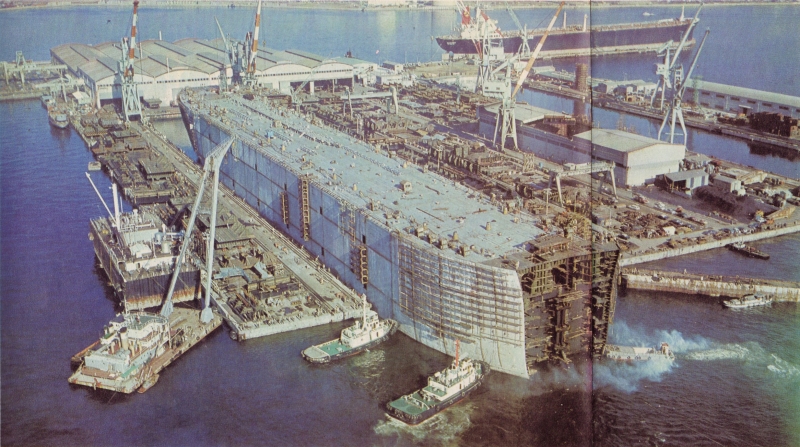Japan, the industrial supergiant of the Orient, is once again determined to build an empire.
Japan's approach is far different from that which led to World War II.
Read this surprising report on Japan's strategy and the prophesied outcome!
JAPAN is again on the march! The latest offensive has already driven further than Japan's military efforts did a quarter of a century ago!
Japanese weapons today are not military but economic. Japan has launched a three-pronged offensive of trade, aid, and investment. The very same battle plan Germany is now using to succeed in dominating Europe, where formerly the Blitzkrieg method failed.
Japan's Lifeline
Japan's economic survival depends upon trade. Lacking almost all natural resources necessary to support a modern industrial economy, Japan is forced to import 100% of its cotton, wool, rubber, and bauxite; 98.5% of its crude oil; 95.3% of its iron ore; 85% of its copper; 81.6% of its wheat; 80% of its sugar, and 75% of its zinc.
Japan is hungry for raw materials. She is devouring an ever-increasing supply from nearly every nation on earth. Iron ore comes to Japan from Chile, Malaysia, India, Peru, and South Africa; steel scrap from the United States; non-ferrous metals from the Philippines; crude oil from the Middle East and Russia; lumber from Alaska; pulp from Canada; rubber from Malaysia; cotton from Mexico and the United States; wool from Australia; sugar from China and Cuba. These are only a few of the many countries feeding Japan's burgeoning industry.
|
Nihon Hasshoku Photo
 |
|
SOKA GAKKAI FESTIVAL — Over 100,000 spectators
filled massive Japanese stadium for Second Cultural Festival.
All who attended were followers of this Japanese lay organization,
in the native Nichiren Buddhist tradition.
|
Japanese owned businesses in foreign nations are on the increase. The vanguard of this economic offensive is composed of industrious and energetic young Japanese who operate everything from an iron mine in Siberia to a vinyl plant in Nicaragua and the largest fertilizer plant in the world in Korea — just to mention a few.
Japan trades with every continent on earth into the billion dollar bracket, with import-export values rising 15% every year!
Assault on the United States
In Anchorage, Alaska, a local resident said wistfully, "If you really want to develop Alaska fast, you'll cede it to Japan. The Japanese would be swarming all over this place in no time, and getting stuff out at a mile a minute." This statement appeared in the Wall Street Journal, December 2, 1966, referring to Japan's "long term peaceful assault on the resource-rich 49th state."
In 1965 Japan took 80% of Alaska's exports — mainly lumber. Japanese purchasers have bought more than a billion board feet of lumber from Washington, Oregon, and California alone each year since 1965 — at a growth rate of 32.6% each year!
Japan is now the largest cash buyer of American agricultural products! According to Japanese Ambassador to the United States, Ryuji Takeuchi, these figures are expected to double between 1965 and 1970, and triple by 1975!
The United States now stands in the position of the number one source supplying the needs of modern Japan.
Australia — Number Two Supplier
The Crown Colony of Australia has also snubbed Britain in favor of Japan. "Japan has become the world's leading importer of Australian products, outranking the United Kingdom and pulling away swiftly month by month." (Asia Scene, October, 1967, p. 48)
Japan imports more from Australia than any other Asian nation! Former Prime Minister Harold Holt credited the upsurge of Australian trade to, "The marriage of our own raw material primary production to Japan's enormous industrial potential."
In 1957, trade between the two countries was practically nil! From a situation of mutual independence, the two countries have reached a state of almost total interdependence. "It would be impossible today to reverse the course of Japanese-Australian relations without doing enormous damage to the economies of both countries." (Sydney Morning Herald, April 17, 1967)
As an example of how new this trade alliance is, consider iron ore. Until 1966, Australia exported No iron ore at all to Japan. In 1967 the Japanese took half the entire output, and have contracts for two-thirds of Australian production by 1972. Much the same is happening with coal.
Japanese mill operators know that there are billions of tons of iron ore in the Australian hills. And they mean to get it out! Japanese shipping interests have scheduled construction of 14 new 30,000 to 50,000-ton ore carriers and12 new 50,000-ton-or-more carriers just to transport ore from Australia.
|
Nishimura Photo
 |
|
Nissan Motors sports cars waiting at Honmaki Pier in Japan.
All will be exported to the United States.
Notice, name "Datsun" on the far left of ship — a well-known Japanese car exporter.
|
Japanese rush in where Britons fear to tread!
"Are the Japanese taking over Australia?" asks William Davis in Asia Scene. "The answer is NO, but they would like to." (Asia Scene, December 1967, p. 14)
Asia — Primary Target
Most people have totally forgotten about Japan's so-called "Greater East Asia Co-prosperity Sphere" of the 1930's. It was Japan's attempt to mask its military conquests under the guise of economic unity.
In early 1967, Japan announced its modern version — the "Asian Pacific (Trade) Community." The ultimate objective is the same — a guaranteed source of supply for critical raw materials and eventually political-military domination of all Asia. However, the Japanese have wisely learned from the mistakes of World War II and are not resorting to military methods to guarantee this supply of raw materials. It is presently being done through economic and diplomatic channels. Japan's present approach is to make friends, not enemies, of those nations in Asia that she needs. However, Japan hopes ultimately to exercise political control of these nations in the formation of an Asiatic alliance.
Japan today has largely achieved the prosperity and range of influence which was the purpose of the "Greater Asia Co-prosperity Sphere" which she sought to create a generation ago by force of arms.
Japan is wooing more nations than she ever dreamed of thirty years ago. Tokyo has launched its own version of the Peace Corps to win the common people of Asia. Tokyo has raised its foreign aid budget to $600,000,000 a year, formed the "Tokyo Club" of Asian creditors, spearheaded the Asian Development Bank, and launched ASPAC — the political union called Asian and Pacific Council.
Osaka, Japan's second largest city, is busily preparing for Expo '70, a greater Asian world's fair. Workers are building housing, electrical, and sewer systems to accommodate a city of 300,000 people. Advertisements for the fair saturate the Asian continent, even appearing on backs of cigarette packs!
The Japanese Industrial Exposition in the Philippines just finished its two-week stay in Manila (March 2-17, 1968). It featured 180 elaborate booths displaying the finest of Japanese wares to these islands of "Greater Asia."
Trade with the Philippines has grown 92% since 1960, and is soon to pass the $600,000,000 mark. Twenty-seven percent of all Philippines' imports are Japanese, and a four-year pact signed by the two nations (1967-1970) promises to increase that rate steadily. Thirty Japanese Peace Corps members operate there, in addition to hundreds of Japanese government workers.
Japan secured a foothold in Asia as early as 1947, when Japanese war reparations were paid to Asian nations in terms of Japanese materials, manpower, and construction work. In the process, the Japanese gained firsthand knowledge of the trade needs of every nation in Asia.
Now, twenty-three years after the war, Japan is angling for formation of an Asian-Pacific economic bloc. This bloc would encompass 30 to 40 percent of the world's trade!
Japan desperately needs Asia, but Asia also needs Japan!
The underdeveloped nations of Asia look more and more to the industrial power of Japan for help. Japan has promised to grant $1,089,000,000 of long-term credit to Asia — that is 87% of all Japanese foreign credit.
Percentage of trade with Asia has constantly grown each year, while percentage of trade with other continents has remained the same or diminished. Total trade in Asia topped $5,564,000, 000 in 1966, $6.4 billion in 1967, and an expected $7.5 billion in 1968.
Slowly but surely the Asian sphere is rallying around Japanese progress, projects, and production. For example, Japan has now consolidated her lead as Formosa's Number 1 buyer and seller, with the United States well back in second place.
|
Shogyo Shashin Photo
 |
|
MAMMOTH SUPERTANKER — Another multi-hundred-thousand-ton tanker
under construction in Japanese shipyard.
|
A Tokyo newspaper reported, "Indonesia has asked Japan to provide about one-third of its $320,000,000 aid requirements for 1968." Indonesia has long wanted to say "Yankee Go Home," but they coveted U.S. aid. Now Asia can have its financial support without the U.S. — from Japan.
Asian shopping centers are aglow with signs advertising Japanese products. Asians commute on Japanese buses, cars and motorcycles. They wear Japanese made clothing. They tell time by Japanese watches. They drink Japanese beer. They shop in Japanese department stores featuring Japanese made goods.
On a larger scale, Japanese government officials and private businessmen spend hundreds of millions annually in foreign aid development programs. Aggressive Japanese businessmen operate steel mills and tire plants in Malaysia, automobile plants in Thailand, fertilizer plants in Korea, lumber industries in the Philippines, oil fields in Indonesia, and electronics industries in Taiwan.